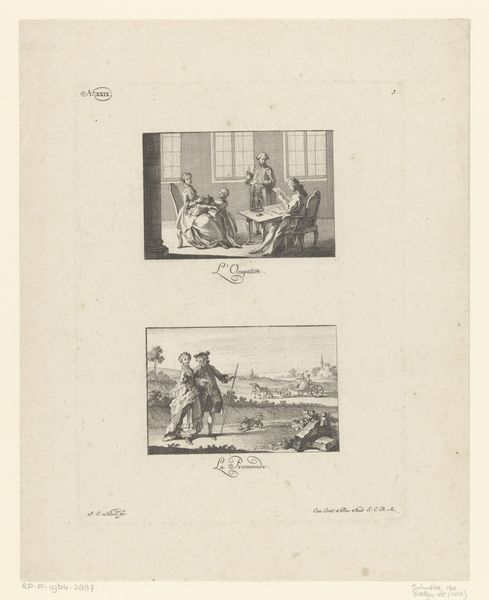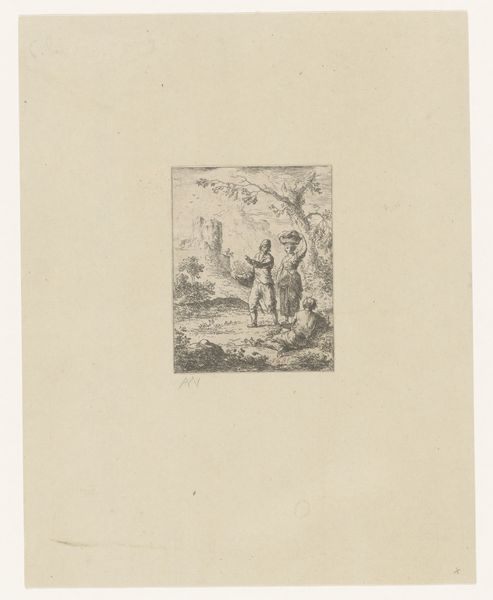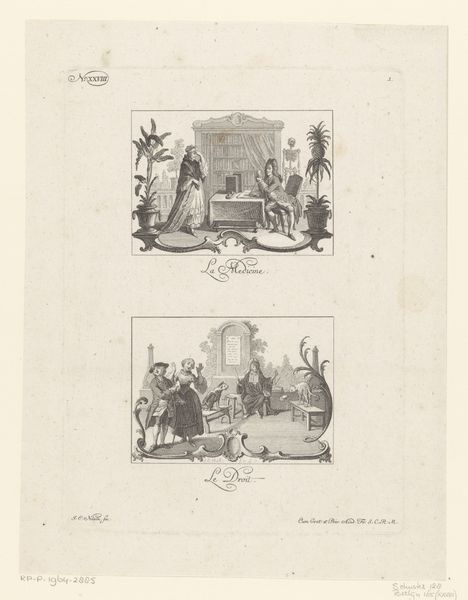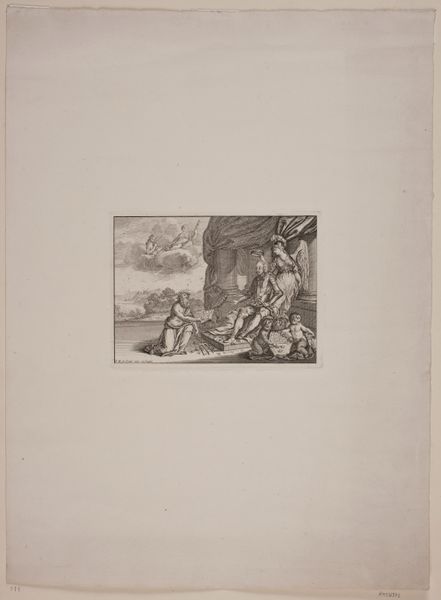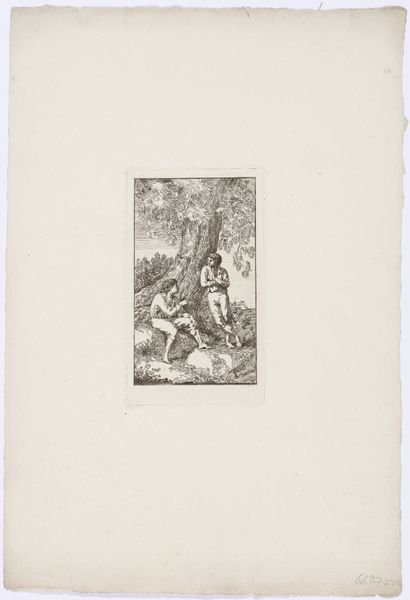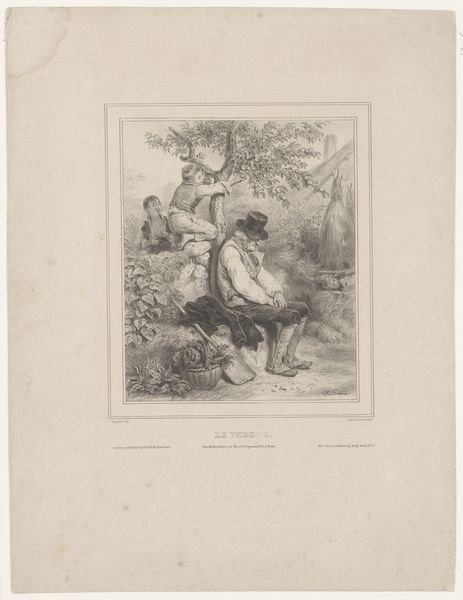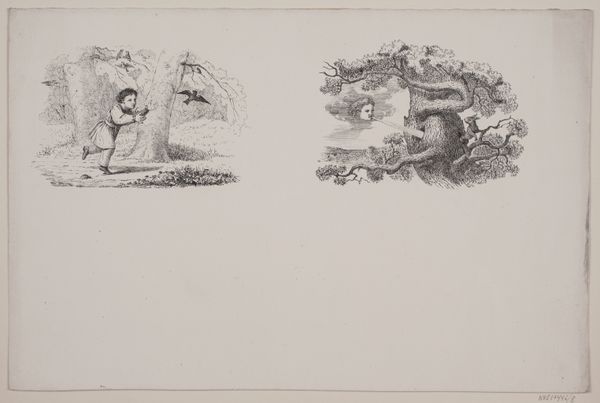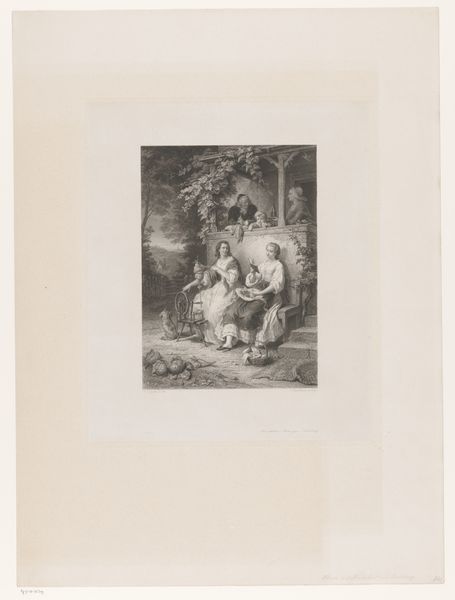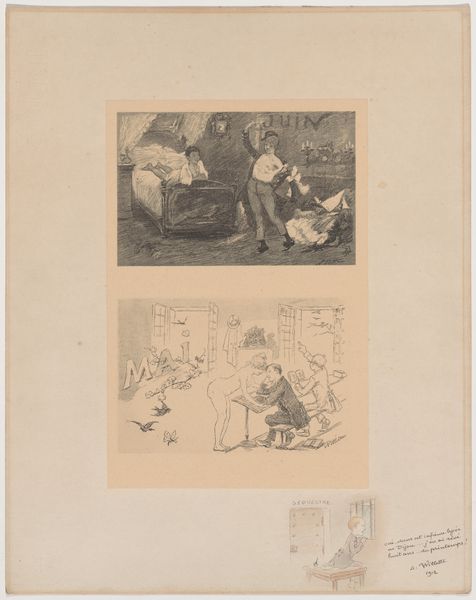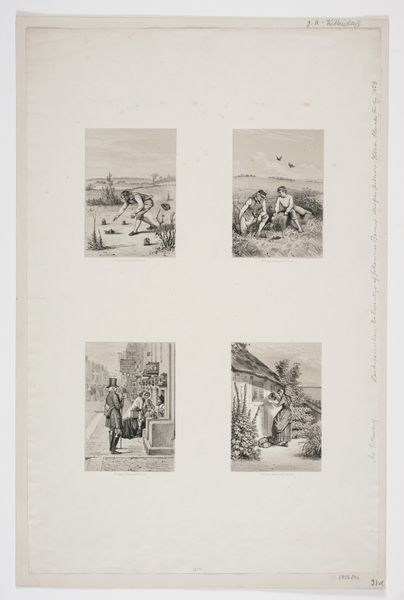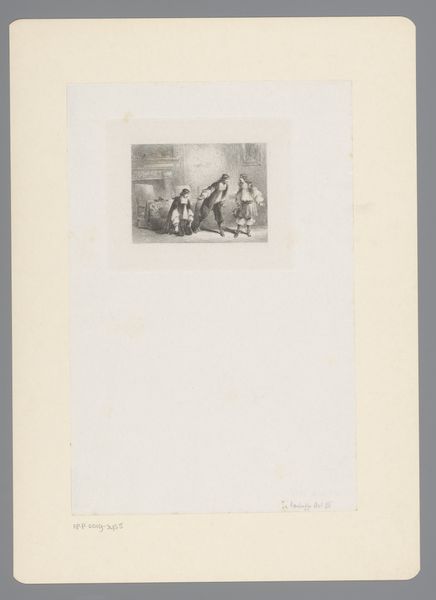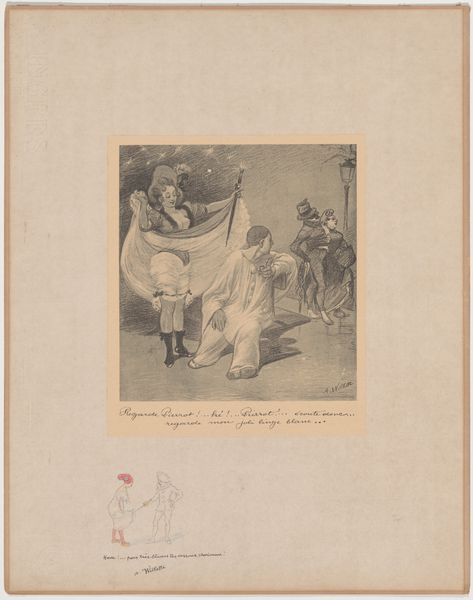
Dimensions: height 222 mm, width 166 mm
Copyright: Rijks Museum: Open Domain
Curator: Johann Esaias Nilson's print, “Werken en rusten”, which translates to "Work and Rest," from around 1766 to 1788, invites a look at labor and leisure. Editor: It strikes me as almost a study in contrasts. The crisp lines of the etching delineate scenes that feel both idyllic and… exhausted. Is it just me, or do they look bone-tired? Curator: Indeed. Nilson has structured this piece cleverly; two vignettes stacked vertically, each a counterpoint to the other. The upper panel, labeled "Le Travail" shows figures tending to what looks like an aristocratic garden, while the lower panel, "Le Repos" captures them in a moment of languor. Editor: Languor is polite. One of them has face-planted! It's interesting – even in rest, their bodies tell a story of physical demand. Was Nilson making a statement about class, about the human cost of these grand estates? Curator: The historical context would certainly suggest it. We are nearing the French Revolution; anxieties and societal imbalances are rising to the surface. Printmakers were integral in shaping and disseminating such sentiments, offering critique through satire and social commentary. It allows for a glimpse into the everyday experience. Editor: Do you think that the Baroque style gives it a kind of… formal remove though? Everything is carefully rendered, even their exhaustion is composed. It doesn’t feel like raw outrage to me. More like a gentle… questioning. Curator: Precisely. The etching style with delicate lines adds to the complexity. Rather than a full-blown condemnation, there's a more nuanced depiction of life, the reality of a class division, yet there’s beauty to be found within its construct. The symmetry of life with toil, and rest to recharge, the necessity of balance. Editor: That's a keen point. It's that constant negotiation – work and rest – that keeps the world turning, really, no matter the era. It resonates, that push and pull. Curator: Yes. We could see this etching as a poignant reminder of these universal dynamics in human existence. Editor: It does get me thinking, in my own life—am I face-planting enough?
Comments
No comments
Be the first to comment and join the conversation on the ultimate creative platform.
